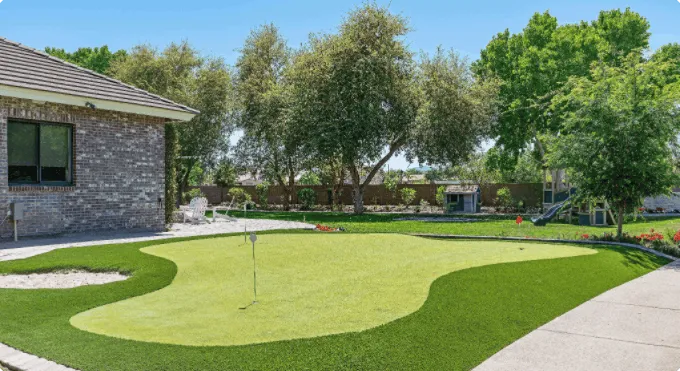
- Afrikaans
- Arabic
- Belarusian
- Bengali
- Czech
- Danish
- Dutch
- English
- Esperanto
- Estonian
- Finnish
- French
- German
- Greek
- Hindi
- Hungarian
- Icelandic
- Indonesian
- irish
- Italian
- Japanese
- kazakh
- Rwandese
- Korean
- Kyrgyz
- Lao
- Latin
- Latvian
- Malay
- Mongolian
- Myanmar
- Norwegian
- Persian
- Polish
- Portuguese
- Romanian
- Russian
- Serbian
- Spanish
- Swedish
- Tagalog
- Tajik
- Thai
- Turkish
- Turkmen
- Ukrainian
- Urdu
- Uighur
- Uzbek
- Vietnamese
The Importance of Selecting the Right Grass for Sports Fields and Turf Management
Jan . 01, 2025 12:38 Back to list
The Importance of Sport Turf Grass Enhancing Performance and Playability
Sport turf grass plays a crucial role in the world of athletic competitions and recreational activities. From soccer fields to golf courses, the quality of turf directly influences the performance of athletes and the enjoyment of fans. Understanding the significance of sport turf grass can help in making informed decisions regarding the maintenance and management of these vital playing surfaces.
The Role of Turf Grass in Sports
Sport turf grass provides a safe and aesthetically pleasing environment for athletes to showcase their skills. It serves multiple functions, including
1. Safety High-quality turf provides a stable and uniform surface that reduces the risk of injuries. Properly maintained grass can minimize uneven areas that may cause players to trip, slip, or fall during gameplay.
2. Playability The right type of grass enhances ball roll, bounce, and traction, all of which are essential for various sports. For instance, a well-maintained soccer pitch allows for smoother ball control and movement, ultimately affecting game dynamics.
3. Aesthetics A lush, green field not only pleases the eye but also reflects the professionalism of the sporting facility. Visually appealing grass can enhance the overall experience for spectators, players, and stakeholders alike.
Choosing the Right Type of Turf Grass
Selecting the appropriate variety of turf grass is fundamental for achieving optimal performance. Several factors need to be considered, including geographic location, climate, and the type of sporting activity. Here are some popular turf grasses used in sports
- Bermudagrass This warm-season grass is ideal for southern climates and is widely used on golf courses and baseball fields due to its resilience and ability to recover quickly from wear and tear.
- Tall Fescue With its deep root system, tall fescue is suited for transitional zones, providing excellent drought resistance and adaptability. Its rough texture makes it a great option for multi-sport fields.
- Perennial Ryegrass Favored for its quick germination and establishment, perennial ryegrass is commonly used in northern climates and for overseeding since it provides a lush, green look throughout the playing season
.sport turf grass

Maintenance of Sport Turf Grass
Proper maintenance is essential for ensuring that sport turf grass remains healthy and capable of performing at high levels. Key maintenance practices include
1. Mowing Regular mowing keeps the grass at an optimal height for growth and playability. Different sports may require different mowing heights, and regular trimming also helps to promote dense growth.
2. Aeration Aerating the soil allows for better air, water, and nutrient penetration, promoting strong roots. This practice is vital during the growing season and helps reduce soil compaction caused by foot traffic.
3. Fertilization Providing the right nutrients is crucial for maintaining healthy grass. Soil tests can guide the appropriate type and amount of fertilizer needed for specific turf grass varieties.
4. Irrigation Adequate water supply is essential, especially during dry spells. Implementing a smart irrigation system can help maintain moisture levels while conserving water.
5. Pest and Disease Control Monitoring for pests and diseases is vital. Integrated pest management (IPM) strategies can help minimize chemical use while effectively managing potential problems.
Environmental Considerations
While maintaining sport turf grass, it is essential to consider environmental impacts. Sustainable practices, such as using organic fertilizers, implementing rainwater harvesting for irrigation, and incorporating native plant species, can reduce the carbon footprint associated with traditional turf management.
Conclusion
Sport turf grass is more than just a decorative element on a playing field; it is foundational to the integrity of sports. By understanding the importance of turf grass, choosing the right species, and committing to sound maintenance practices, sports organizations can create outstanding fields that provide safe, engaging, and aesthetically pleasing environments for athletes and fans alike. As the sports industry continues to evolve, embracing innovative and sustainable practices in turf management will be pivotal in enhancing the overall quality of athletic experiences.
-
The Benefits of Artificial Turf for Indoors
NewsJul.15,2025
-
How Artificial Grass Suppliers Ensure Quality Products
NewsJul.15,2025
-
Artificial Grass and Pets: A Space for Relaxation
NewsJul.08,2025
-
Balcony & Outdoor Decoration with Artificial Grass
NewsJul.08,2025
-
Best Indoor Artificial Grass for Home
NewsJul.07,2025
-
Best Pet Turf for Dogs: Safe & Durable Artificial Grass Options
NewsJul.07,2025
Products categories









